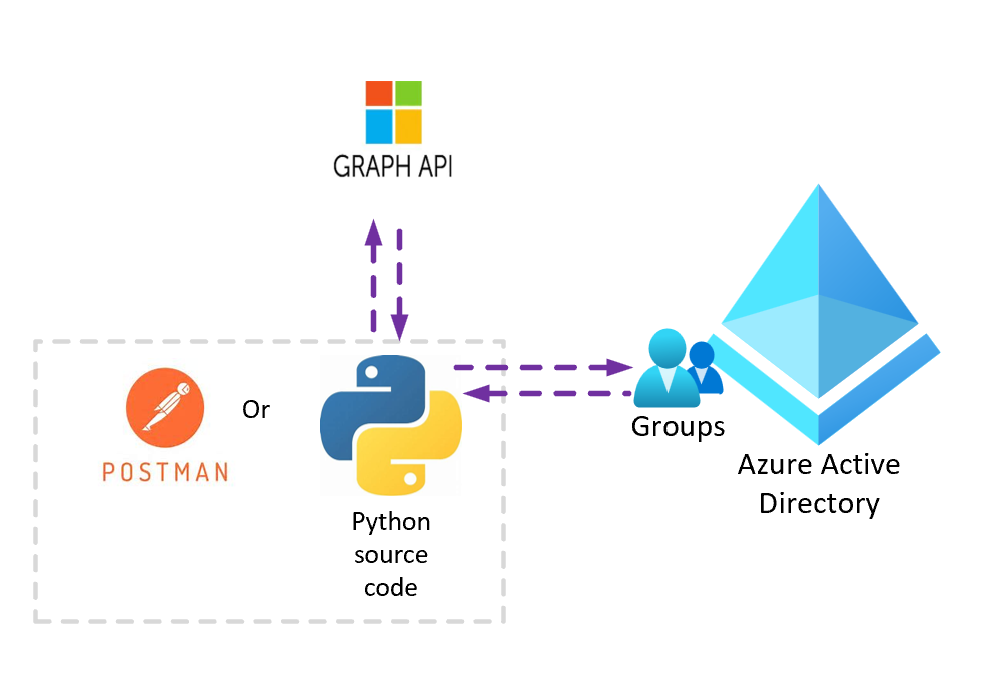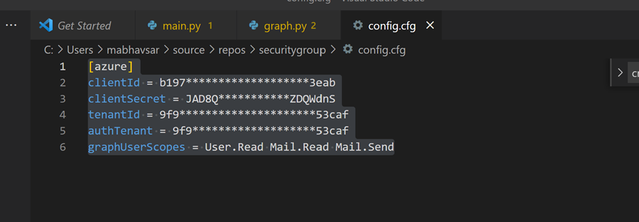How to Create Azure AD Security Group using Microsoft Graph APIs (Postman & Python Code Sample)

Azure Active Directory (Azure AD) groups are used to manage users that all need the same access and permissions to resources, such as potentially restricted apps and services. Instead of adding special permissions to individual users, you create a group that applies the special permissions to every member of that group.
You can refer to below steps for the scenarios in which you have Azure AD service principle with required permissions to create Security Groups in Azure Active Directory and need to call Microsoft Graph REST APIs from your dev or local environment via Postman or through python code.
First step is to register a client application with Azure AD and assign required permissions to create AD groups
1. Sign in the Azure portal, search for and select Azure Active Directory.
2. In the left panel, under Manage, select App registrations > All Applications > Select your registered application (Service Principal Account) > API Permissions
3. Least Privileged Permissions required to create AAD groups are:
- Group.Read.All
- Group.ReadWrite.All
- Group.Create
Python Source Code:
Refer attached python source code (SecurityGroupCreatePythonSample.zip)
- Update ClientId, ClientSecret and Tenant details in config.cfg file
- Update Request body to create new group in graph.py file
- Install Required dependencies to build the project.
python3 -m pip install azure-identity python3 -m pip install msgraph-core -
Ensure that installed package script path are added into System Environment Variables.
- Run Main.py file. Choice 6 and 7 are the methods to list or create group using SPN (App Only Authentication)
Reference Link:
Build Python apps with Microsoft Graph - Microsoft Graph | Microsoft Docs
Step 7: Build Python apps with Microsoft Graph - Microsoft Graph | Microsoft Docs
Step 8: Build Python apps with Microsoft Graph - Microsoft Graph | Microsoft Docs
Postman:
Create Authorization Header in Postman Requests Collection Folder Level:
Access Token Url: https://login.microsoftonline.com/{{TenantID}}/oauth2/v2.0/token
Scope: https://graph.microsoft.com/.default
Grant_Type = Client Credentials
Rest API to create Group:
Url: https://graph.microsoft.com/v1.0/groups
Request Type: Post
Authorization Type: Bearer Token. Copy the access token created from above step
Request Body:
Reference Link:
Use Postman with the Microsoft Graph API - Microsoft Graph | Microsoft Docs
Note:
- If SPN is granted with Delegated permission, you need to follow User Authorization Code to generate access token
- If SPN is granted with Application permission, you can follow Grant type= Client Credentials
Published on:
Learn moreRelated posts
Teams Delivers a Slack Migration Tool
Microsoft announced the availability of a Slack to Teams migration tool in the Microsoft 365 admin center. The new tool exists to assist the 7...
Semantic Reranking with Azure SQL, SQL Server 2025 and Cohere Rerank models
Supporting re‑ranking has been one of the most common requests lately. While not always essential, it can be a valuable addition to a solution...
How Azure Cosmos DB Powers ARM’s Federated Future: Scaling for the Next Billion Requests
The Cloud at Hyperscale: ARM’s Mission and Growth Azure Resource Manager (ARM) is the backbone of Azure’s resource provisioning and management...
Introducing new tool to migrate content from Slack to Microsoft Teams
A new Slack to Microsoft Teams migration tool will roll out from December 2025 to March 2026, allowing admins to migrate Slack channel content...
Microsoft Purview DLM: Retirement of SharePoint online information management and in-place records management features
Starting April 2026, SharePoint Online will retire legacy features like Information Management Policies and In-Place Records Management. Organ...
SharePoint Online Dumps Legacy Compliance Features
MC1211579 (3 January 2026) announces the retirement of four legacy SharePoint compliance features in favor of Purview Data Lifecycle managemen...
Microsoft 365 Copilot Help & Learning Portal
The Copilot Prompt Gallery + Help & Learning Portal provides central hubs where you can discover, customize, save, and reuse high‑quality ...
🔔 M365 Office Hours - January 2026
Teams Admin Center Simplifies External Collaboration
Microsoft is rolling out a UX update for the Teams admin center to make it easier to manage external collaboration settings. The new UX doesn’...






